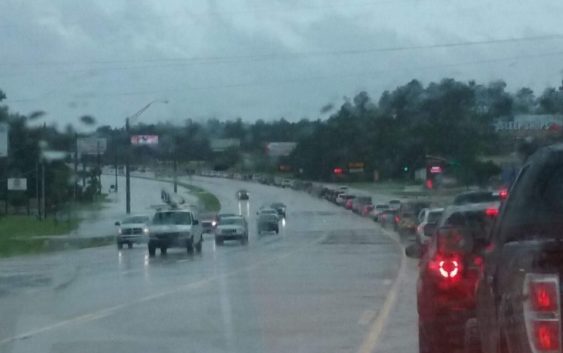- Seven months after Hurricane Helene, Chimney Rock rebuilds with resilience
- Wildfire in New Jersey Pine Barrens expected to grow before it’s contained, officials say
- Storm damage forces recovery efforts in Lancaster, Chester counties
- Evacuation orders lifted as fast-moving New Jersey wildfire burns
- Heartbreak for NC resident as wildfire reduces lifetime home to ashes
As hurricane season approaches, Fort Bend County urges residents to begin preparing

Hurricane season is quickly approaching, officially beginning June 1 and continuing until the end of November. According to local officials, the time to start preparing is now.
The frequency and damage incurred by natural disasters has been at an all-time high in recent years. According to the National Oceanic and Atmospheric Administration, 2020 set the record for the most natural disasters in the U.S. with $1 billion or more in damages. It’s followed closely by 2021 and 2022.
“Disasters keep coming at a more frequent pace, and that’s absolutely true. The second part of that is also more catastrophic,” said Francisco Sanchez, associate administrator for the U.S. Small Business Administration’s Office of Disaster Recovery and Resilience. “This time last year, we had 70 declared disasters, roughly. At this time, we’re approaching 90.”
Fort Bend County announced the launch of its 2023 hurricane preparedness campaign, as the fast-growing county has many new residents who may not have knowledge or experience with hurricane preparedness.
Since Hurricane Harvey in 2017, Fort Bend County has gained more than 140,000 new residents, according to U.S. census data.
“There are so many people moving to Fort Bend County having never experienced a hurricane, and our population has continued to grow,” said Fort Bend County Judge KP George. “We have become almost the 8th largest county in the state of Texas, with almost 900,000 people.”
George said he encourages residents to begin developing family emergency plans and putting together supply kits now. He also recommends residents sign up for Fort Bend County emergency alerts by texting “FBC Alert” to 888-777.
On a larger scale, Sanchez said business and homeowners in the Houston area should increase their own resilience capacity before disaster strikes, in part, by making sure they’re fully covered by insurance.
“Do your insurance check-up. Figure out what you’re covered for, what those gaps are, match that up against your risk and make sure you’re covered and paying for that on the front end,” said Sanchez. “There’s a huge, growing gap between what it costs to rebuild and what people are insured for.”
He also recommends that businessowners make emergency preparedness plans ahead of time with employees as well as suppliers.
If a home or business does incur damage as a result of a natural disaster, Sanchez said individuals can apply for SBA disaster loans of up to $2 million for businesses and nonprofits or up to $200,000 for homeowners. Renters and homeowners are also eligible to apply for loans of up to $40,000 to repair or replace destroyed personal property, including vehicles.